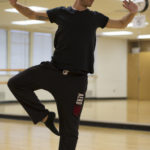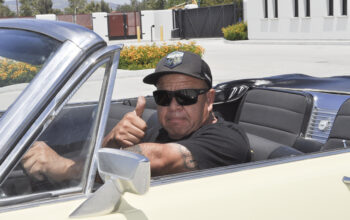
Dancing isn’t just solely body movements, but a sense of self-awareness. One must be conscious of their kinesthetics to achieve confidence, that is what instructor of theatre and dance Brian Moe is hoping to achieve.
Moe has been dancing since 5, following along the footsteps of his siblings.
“My sister danced, my brother danced, and then I danced. I’ve always been doing theatre and dance,” Moe said. “Our parents didn’t dance, but luckily they were very supportive.”
Moe is originally from Syracuse, New York. He attended Liverpool High School, and came to California seven years ago for grad school at Cal. State Long Beach (CSULB), where he received his Master’s in Fine Arts.
“New York is nice to visit, but it’s too cold. They have a great dance world in New york and Broadway is there of course, but we do a lot out here in the West Coast as well,” Moe said. “LA has a huge dance community. Not just commercial, but as well as concert dance.”
Moe works with a variety of genres when it comes to dance, but his main focus is jazz and ballet.
“I did competition dance until I was about 11 years old, which was like jazz and ballet. I then switched to just strict ballet school when I was 12, and I did that up until college,” Moe said.
Moe has choreographed more than 12 musicals, nine of which were at CSULB. He recently choreographed his first piece for Pierce College, and also put together the music for it.
“Tales, Myths, and Fables. It was the story of Orpheus and Euridice. They are in love. Euridice dies and goes down to the underworld and Orpheus makes a deal with hades, and hades says you can bring her back to life but you can’t look at her as you leave her out of the darkness. So the whole ending of it is him leaving her towards the light,” Moe said.
Before Moe began teaching at Pierce College about a year ago. He previously taught at Santa Monica College, The American Musical and Dramatic Academy (AMDA), and CSULB. Moe has encouraged and helped his students to persevere through his classes.
“I enjoy his class a lot. It’s challenging at times, but it’s really fun. He’s awesome. He’s like a friend, but he keeps it very professional,” nursing major Angela Lopez said. “He critiques you, but it’s always positive and it helps you in the end. I’m probably going to take another one of his classes in the winter.”
Although some of his students find his class a bit challenging, they know it’s going to help them improve their skills.
“I have an IEP, a learning disability, so they told me that I couldn’t dance because of it. So that’s why his class is a little challenging for me, but because he’s so patient with me, I get through it,” Sadee Galván, 18, said. “Because he expects so much from me, I have more faith in myself that I could do it.”
Galván hasn’t always had a great experience with dance instructors in the past, so she strongly advises students to continue taking Moe’s courses because he has helped her overcome the negativity.
“I would take him again because he has made dancing really exciting for me, and I haven’t had a teacher that expects so much from me. It’s pretty cool to have someone believe in me like that.” Galván said.
Just like Moe has influenced his students, he has many influences that he looks up to.
“I’m influenced by jazz greats. I’m influenced by Matthew Bourne and his use of narrative and storytelling. I’m influenced by Jiri Kylian and his partnering skills and how he choreographs the body. There’s a lot that inspires me,” Moe said.
Dance, like all performing arts, has a degree of inherent subjectivity. Moe interprets the sheer amount of different permutations a piece can take as a challenge.
“There’s just so much out there. It is such an exciting field because its ever-progressing, it’s
ever-shifting, and there is always new variations of ways to speak the same movement with different formats,” Moe said.



